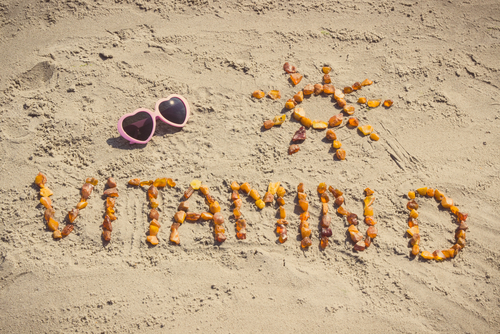Spotlight On Vitamin D
As the winter months settle in up here in Northern Ontario, Vitamin D becomes an important nutrient to think about.
Blood work can tell you if you’re deficient or not. Although there are guidelines out there, ALWAYS speak with your Doctor about supplementation and how much you should take. Vit D can build up and reach toxic levels (does not apply to sun exposure).
Some medications, medical conditions and being part of certain populations (for example, if you live above the 37th parallel and you don’t get very much sun for during winter months -November to March) can put you at a higher risk of being deficient. In addition, Vitamin D is a fat-soluble vitamin, so people on low-fat diets run further risk of deficiency. in such cases, supplementation is sometimes a good idea.
Of the several forms of Vitamin D, D2 comes from food sources, and must be converted by the liver then the kidneys to be fully ‘activated’. the other form, D3, is created by the skin’s exposure to sunshine. (Hence the nickname ‘sunshine vitamin’) Just 15 minutes a day of sun exposure to bare (no sunscreen) face and arms is enough to get an adequate amount of Vit D.
Vitamin D is important for several reasons:
- Absorption and use of calcium and phosphorus
- Normal growth of bones and teeth
- Protects again muscle weakness
- Prevention of colon and breast cancer, osteoarthritis, osteoporosis
- Enhances immunity
- Needed for normal thyroid function and normal blood clotting
- Plays a role in the prevention & treatment of diabetes, high blood pressure, glucose intolerance and multiple sclerosis, cancers
According to The Eat Right Ontario website, the amount of vitamin D you need depends on your age:
| Age group | Aim for an intake of international units (IU)/day | Stay below IU/day* |
| Infants 0-6 months old | 400 | 1000 |
| Infants 7-12 months old | 400 | 1500 |
| Children 1-3 years old | 600 | 2500 |
| Children 4-8 years old | 600 | 3000 |
| Children and Adults 9-70 years old | 600 | 4000 |
| Adults over 71 years old | 800 | 4000 |
| Pregnant and Breastfeeding Women | 600 | 4000 |
| *This includes vitamin D from both food and supplements | ||
A small handful of foods contain Vitamin D – here’s a list according to the National Institutes of Health:
| Food | IUs per serving* | Percent DV** |
|---|---|---|
| Cod liver oil, 1 tablespoon | 1,360 | 340 |
| Swordfish, cooked, 3 ounces | 566 | 142 |
| Salmon (sockeye), cooked, 3 ounces | 447 | 112 |
| Tuna fish, canned in water, drained, 3 ounces | 154 | 39 |
| Orange juice fortified with vitamin D, 1 cup (check product labels, as amount of added vitamin D varies) | 137 | 34 |
| Milk, nonfat, reduced fat, and whole, vitamin D-fortified, 1 cup | 115-124 | 29-31 |
| Yogurt, fortified with 20% of the DV for vitamin D, 6 ounces (more heavily fortified yogurts provide more of the DV) | 80 | 20 |
| Margarine, fortified, 1 tablespoon | 60 | 15 |
| Sardines, canned in oil, drained, 2 sardines | 46 | 12 |
| Liver, beef, cooked, 3 ounces | 42 | 11 |
| Egg, 1 large (vitamin D is found in yolk) | 41 | 10 |
| Ready-to-eat cereal, fortified with 10% of the DV for vitamin D, 0.75-1 cup (more heavily fortified cereals might provide more of the DV) | 40 | 10 |
| Cheese, Swiss, 1 ounce | 6 | 2 |
https://ods.od.nih.gov/factsheets/VitaminD-HealthProfessional/
* IUs = International Units.
** DV = Daily Value. DVs were developed by the U.S. Food and Drug Administration to help consumers compare the nutrient contents among products within the context of a total daily diet. The DV for vitamin D is currently set at 400 IU for adults and children age 4 and older. Food labels, however, are not required to list vitamin D content unless a food has been fortified with this nutrient. Foods providing 20% or more of the DV are considered to be high sources of a nutrient, but foods providing lower percentages of the DV also contribute to a healthful diet.
Eat a well-balanced diet, including foods from the list above, and get out into fresh air and sunshine. keep in mind Although my reading indicates a good percentage of us are deficient, please consult your doctor or nurse practitioner before starting any supplements.
Be well, stay well my friends!
~Erin


